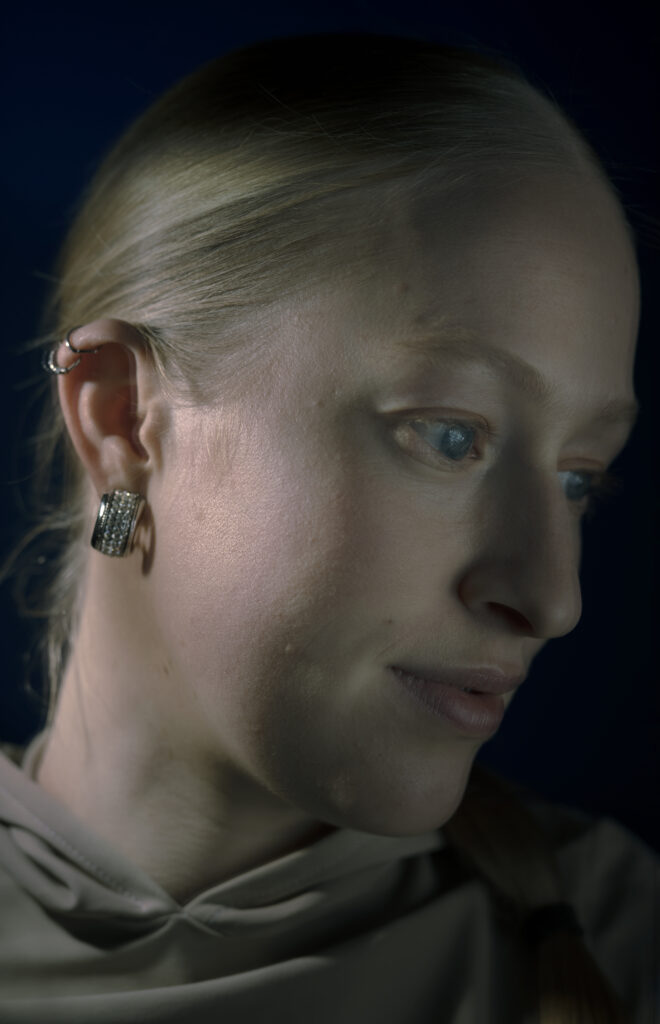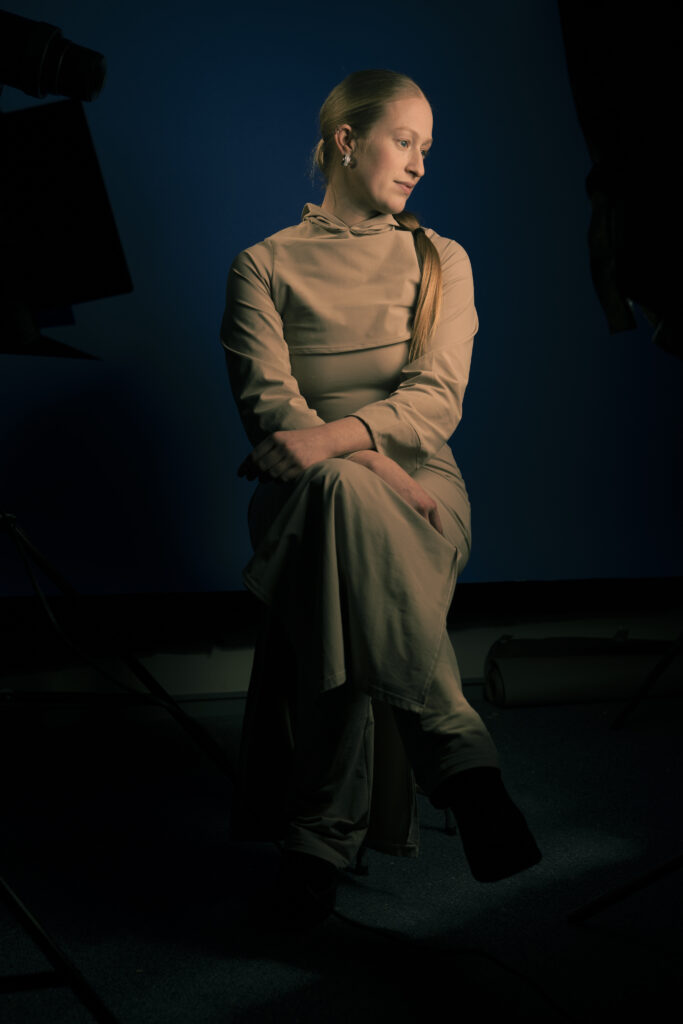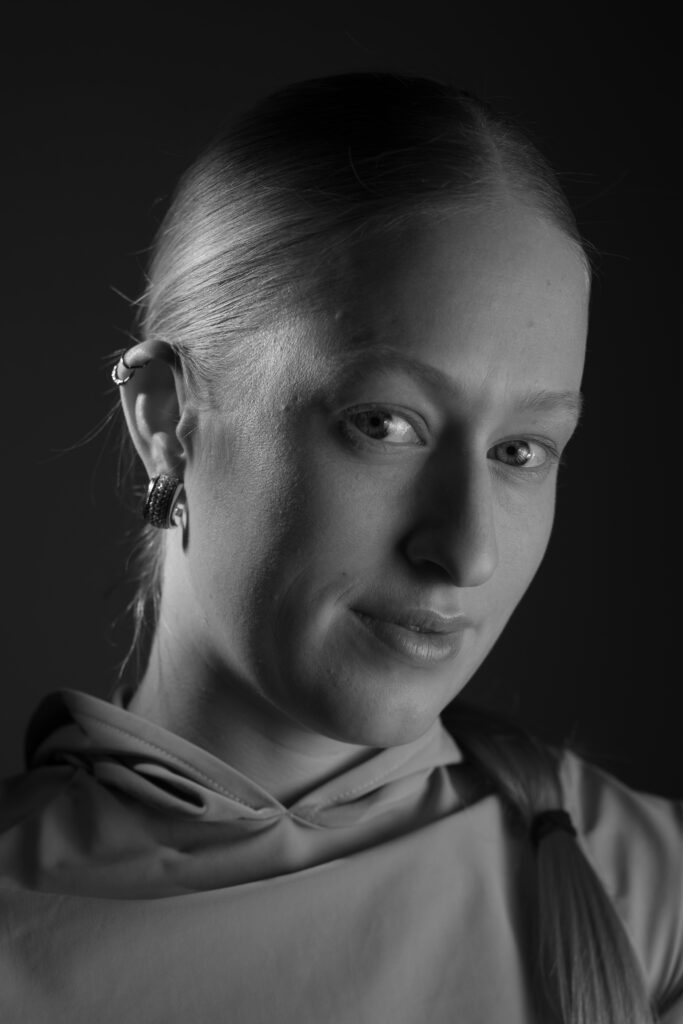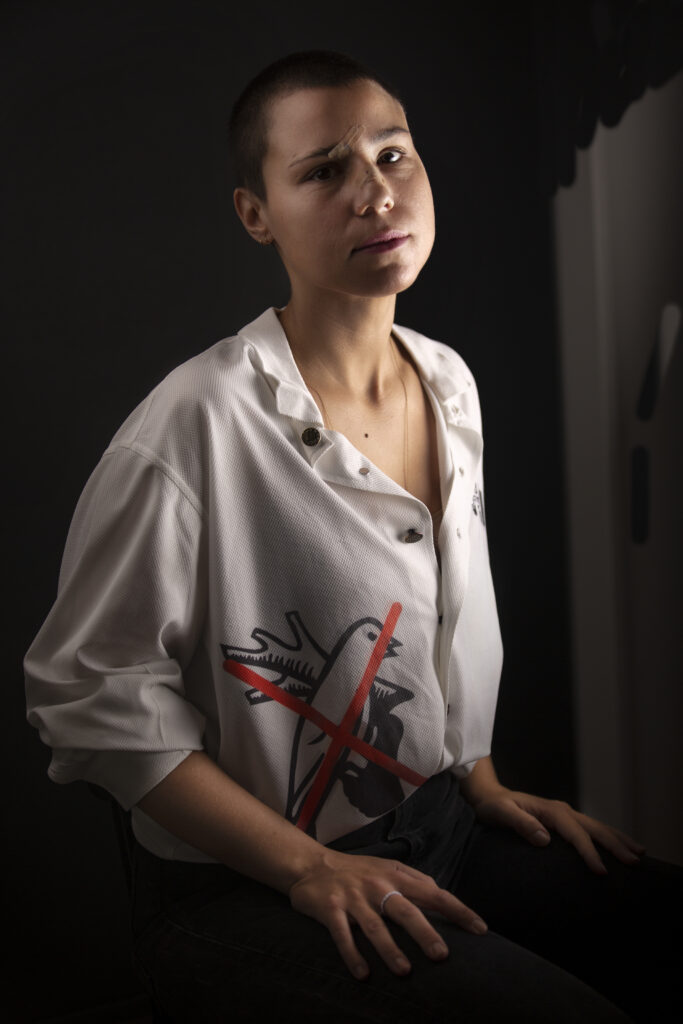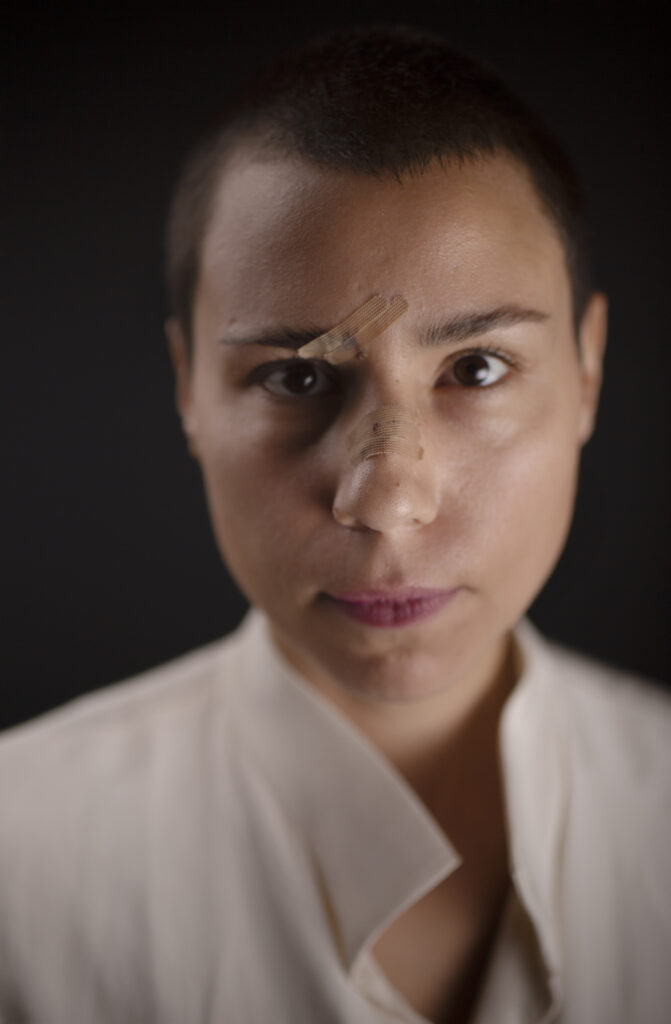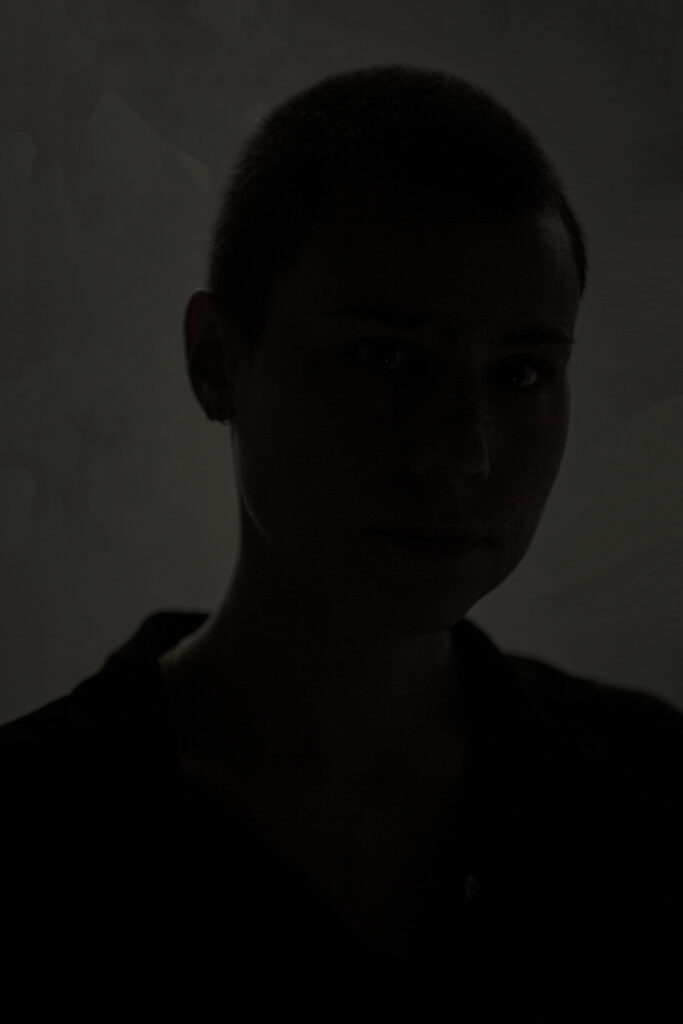DUOLOGUE WITH LEENDERT VOOIJCE
Comments Off on DUOLOGUE WITH LEENDERT VOOIJCE“My mother is a Russian ballet dancer who left Moscow, my father is a fisherman from Katwijk. I was born in a dream world with reality in walking distance.”
This interdisciplinary performance artist, writer, and part of theatre collective Zina, a Female Economy, creates a poetic alternative.
What do you do in your professional life?
[…] It is precisely such a word as ‘professionalism’ that confuses me. Because on the one hand, I think: I’m not working professionally at all; but on the other hand, I would say I’m very professional… It places my life in a framework of hierarchy or a structure that I do not feel at home in. Do you understand what I mean?
Do you mean that you don’t separate your work from the rest of your life?
Oh, that’s what you were asking! To answer your first question, I am an artist, and no, I don’t separate work and life. A word like professionalism confuses me. My work is very personal, hyper-personal, I would say. Therefore, it’s hard to disconnect from it. Also, that isn’t something I aspire to. A question that creates a division between certain elements of life is upsetting to me. I see life as a whole, and I try to engage with life through art. And I do that on a what you call professional level (laughs).
On your website, you describe yourself as a Mother. That feels very loaded to me.
I describe myself within a context, and the full sentence says; You tend to ask me what I am. In reference to, career, religion, politics, sexuality, gender. My answer: I am a Mother. It could be interpreted as loaded, but for me, it isn’t at all. […] I wanted to put the feminine movement above all these terms. For me, these terms are, perhaps I am taking a big step now, linked to an ‘earnings model’. By that, I mean capitalism or the system, but I think those are ugly words. There is a systematic hierarchy in which we value, categorize, exclude things, etc. That’s the same with such a word as professionalism, it tries to create a separation. We as human beings relate to each other in such a system through competition instead of proximity. For me, it’s hard to move in that, though I am part of society, so I have to relate to it in a way. As an artist, I try to play with that, to alter certain narratives and create a different kind of beauty and inspiration. And I try to work within an idea of caring and give shape to that idea. And the one who really operates with care as the main focus is the Mother.
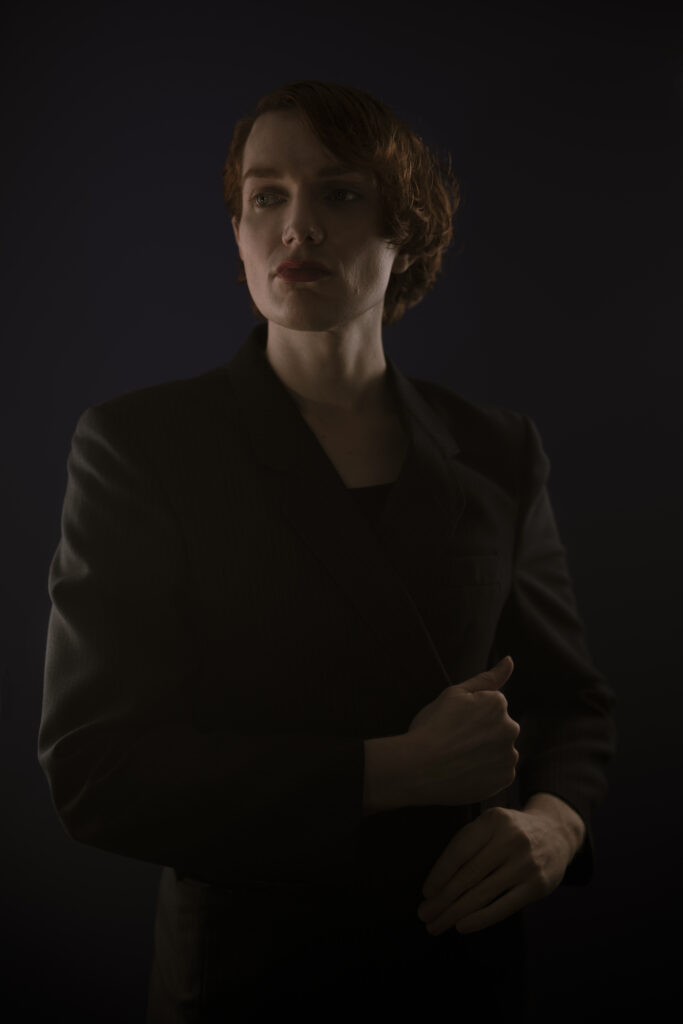
You are working on your project Lullabies for Adults (tentative title).
How did you get that idea?
I was thinking: When lullabies are no longer sung, the adversity of growing up commences; the world can no longer be saved (laughs). When you get off your caretaker’s lap and you start going to school, you’ll get thrown into this system of earning. Care is no longer the main concern. From then on relationships seem not to be approached by proximity, but are rather reduced to distance and competition. Care as something ‘feminine’ is regarded as unproductive since it’s not self-enriching. The same goes for sleep. Sleep is not seen as something that’s part of the rhythm of the day, but instead as something you have to get over with as quickly as possible so you can go back to being productive again. I think the world would be a much prettier place if people took more naps!
These thoughts started for me with a one-sentence poem: ‘lullabies for adults’. A conversation between Anouk Hoogendoorn and I arose naturally and thus we decided to start this project. We are attracted to the same qualities in the concept of the lullaby. She posed the question: “When does it happen that the eyes open in the morning?” Still wondering about this, we talk about lullabies; research how they move between caretaker and child; what their musical aspects are; and how the gesture preludes a shift from a mode of being awake to falling asleep. Around these questions and propositions, we invited different makers from all over the world to think with us: C.Leaff (Ireland), MADMOIZELL (France), Renee von Trier (Netherlands), Chris Moore (USA), Matisse Apsimon-Megens, and Benjamin Muñoz (Canada). Everyone makes a lullaby or moves with the concept as they want. We are making an online platform where we present these interpretations, texts, and images as an inventory. Imagine a night of insomnia; you go to the platform, and you’re being sung to sleep by all those voices and images!
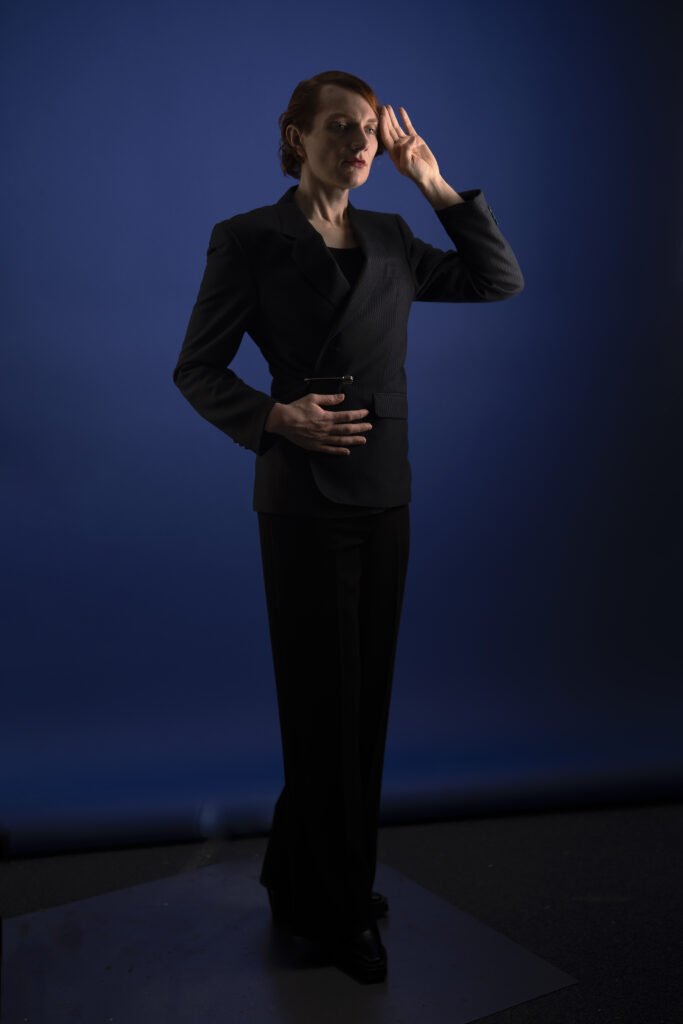
When I first met you, I wasn’t sure what pronouns to use for you. So I used they / them.
Gender has been a topic in my life since childhood. When I was little, people thought I was a girl, and I still get that today. Many people get confused by my ‘gender presentation’. But I really don’t know. Maybe I am transgender. I don’t know what to call me. I am okay with everything. […] With that being said, I have to say I am speaking from a very personal point of view. And that this isn’t a standard. I don’t know what pronounce you should use for me, but a lot of people are very clear about that.
I always try to not write he/she/they anywhere, like in the biography [on my website].
I noticed.
I don’t want to define that. Because I don’t know. Because I find that uninteresting. I enjoy it when people end up confused when meeting me. Because it affects something in the other person, and I hope it reflects on their personal [gender] norms. It doesn’t affect me anymore in a negative way, because it’s not about me. But as a child, it could be hard. Back then, they would approach me as ‘she’ or ‘girl’. It confused me. I thought, But I’m not a girl, am I? Other moments can be super painful. When your parents take you to a birthday party and when grown-ups do not know how to approach you, (is that a girl or a boy?), they ignore you. It caused a kind of unrest and shock in the other person, and they would act like, Well I’m not going to touch that, I’m just going to ignore it. Then it doesn’t exist and I don’t have to do anything with it. As a kid, it paralyzes you. Now, I use this in my work, and it became something that I’m in charge of. And it’s not that I only want to make a statement about gender politics, but it’s about dismantling a structure that allows that to exists. For me, it’s all about tilting, ‘What is actually real and what is not real?‘ or ‘What is normal, what is not normal?‘, play around with that and set things in motion. Not using he/she/they in my bio or not clearly stating a pronoun is the same as a project like Lullabies for Adults: A twist that makes you understand, oh something is happening there. This also happens with the sentence of ‘I am a Mother’. When I close my eyes, and I get in touch with my inner being, I never would ask myself ‘What am I?‘. But because I’m born within a structure where I competitively relate to you, I have to make a choice. And I’m no longer going to do that for you to understand me. My work is, in a sense, dealing with this feminine perspective of care, or the matriarchal perspective versus the patriarchal perspective, to use those words for a moment. […] As an artist, I am investigating and developing something, finding language, letting something drift through my fingers and feeling it, experiencing it. To create a poetic alternative which I present back into the world to allow people to experience it and alter their way of understanding life. Maybe that’s an overstatement, but it’s a wish to influence the becoming of us human beings. As we all do, we all influence what we as human beings are and become. A lot of people move convulsively through life, and I wish for them that they could dance.
It reminds me […] I read the interview of [Stedelijk director] Rein Wolfs in the Volkskrant of 7-01-2021. Rein Wolfs said: “The Netherlands was early engaged with diversity, but it did not follow through.” And his explanation of how to deal with that and how to follow through with a more diverse policy sounded to me as a reflection of the same structure that made our policies around art so poor. Trying to solve a problem that originated within the structure you’re trying now to solve, is a dog biting its own tail. The structure I am referring to is this structure of an ‘earnings model’. “We want to show more work by makers of colour and from other countries of origin,” Wolfs said. The director now applies a quota: between 2021 and 2024, at least half of the purchase budget will go to art by artists of colour and artists from outside Western Europe and North America.
Why did nobody asked the question; damn, we have seen the art world through the white hetero normative perspective for hundreds of years – what we know is maybe 5% of what is happening within artistic development in the world and the rest of the 95% got ignored. You don’t see that as art, you don’t consider that as professional (just to use that word again), you don’t consider it good. But who decides that? Instead of saying that at least half of your purchase budget will go to art by artists of colour, tell us how you’re going to change the perspective from where you buy art. Tell us about your guidelines in purchasing new work. How will they make the museum or even the Netherlands as a whole more diverse, and what does that mean? Tell us what you define as good art to buy a work. Tell us how the museum will help us redefine what art is – what ‘good’ art is. Making at least half of the purchase budget go to artists of colour is part of it. But that is not it. This perspective has to be tilted to start moving towards a more diverse and inclusive museum and world. I think we, as a new generation of makers, have a naturally more open and diverse view on art, art institutes, and other aspects within the creative field and even life itself. The generation of Rein Wolfs should incorporate that new generation within their decision making.
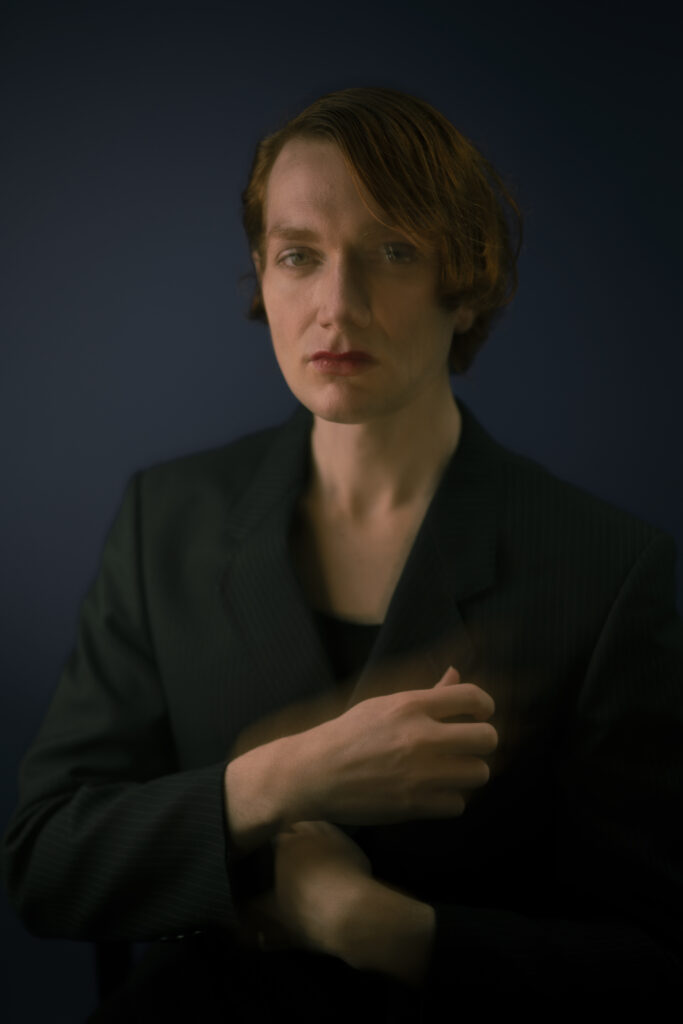
You studied at the Gerrit Rietveld Academy, what did you think of it?
I am not sure about that yet. I think what an academy should try to be is a free space in which you have several people who guide young talent or raw talent through that free space. But of course, it is a school that has to relate to a bureaucratic system of ‘Will you pass or not?‘ and the guides, or teachers as they are called, all look at art in their own way, etc., etc. After the graduation ceremony Gijs Müller, the coordinator of the Image and Language department [where I graduated from], and I were smoking a cigarette when he asked me: What did you miss at the Academy?
And for me, that was a performative aspect – as a discipline which can be taught, but also as a way of teaching or as I like to say, guiding. Then he posed the question: Do you want to teach next year? When I was in that bubble of that academy, I didn’t have a distance to find the vocabulary to describe what was wrong or what I thought could be different. But by stepping out of that and entering it differently, as a guest guide, I started researching that. And I still am. How does an academy work? With its board and management, teachers who all want something. But what is the common goal? Phew, I don’t know. An art academy in itself wants to pry itself away from such a bureaucratic school system, but it cannot. But by trying, something does happen. Therefore everything seems possible. It questions itself, and the possibility to question itself creates space. An academy is also a place where art happens, instead of just being shown. There is a continuous conversation about what art is, what it could be, what it can become. In that sense, an art school is more interesting than a museum.
[…] Last year I said to the students: We have the whole city at our disposal, so let’s just take it. So you’re not dependent on a gallery or another kind of art institute. Of course, that has been done for hundreds of years by street artists, but I think it still has an unexplored potential and I wanted to research that. The conscious choice as an artist to present your work in the public space, outside the white space, a museum, a gallery, or other art institutions. I am now working with that idea for a presentation at FactorIJ later this year titled ‘I’m an Artist, Don’t Call the Police’. In the [first] lockdown, I did a few public performances. In the city, you have the Green Curls, the urinals for men. I started cleaning them as a performance.
How were those public performances?
I think it could be beautiful. […] I wanted to focus on the performativity of our daily routines, in this case, on the movement of cleaning something. It also touches on this idea of taking care. I did some try-outs, and now I’m composing a piece to accompany the performance. When it’s a bit warmer, I’ll start cleaning the urinals again.
It activated me to think more about ‘What is art?’, ‘How does the art world work?’, ‘What do we attach importance to?’, and how I want to be part of it?
Visit Leendert Vooijce’s website
Photography by Roman Ermolaev
Written by Nilsu Göçer
